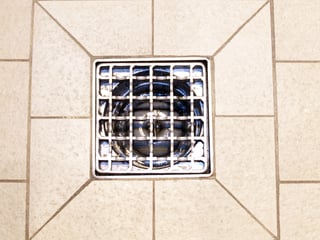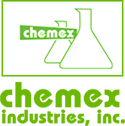 In any industrial setting floor drains play a key role in the functionality and safety of a facility. From a comfort perspective, unprotected drains can develop smells, become a source of pests, and make a normal task less efficient. From a safety perspective, unprotected drains can backup to create slip and fall hazards and allow dangerous gases to infiltrate the area. While we walk around, step over, and large don’t notice these convenient pieces of infrastructure, these are elements we should be well aware of; because when they become noticeable, expensive and hazardous conditions can occur.
In any industrial setting floor drains play a key role in the functionality and safety of a facility. From a comfort perspective, unprotected drains can develop smells, become a source of pests, and make a normal task less efficient. From a safety perspective, unprotected drains can backup to create slip and fall hazards and allow dangerous gases to infiltrate the area. While we walk around, step over, and large don’t notice these convenient pieces of infrastructure, these are elements we should be well aware of; because when they become noticeable, expensive and hazardous conditions can occur.
Knowing that problems can occur inside of a drain is only the first part of finding a solution. Recognizing potential problems and understanding how to solve and prevent them is imperative. This can be tricky as plumbing technology has been slow to evolve since the advent of drainage. New drains in newer buildings are being tasked with handling more pressure, and managing a wider variety of materials. Along with these added stressors, there is a focus on buildings to be more conservative in their water use, this green initiative can created additional issues for drains. Low flow toilets, and other water-saving devices are reducing the amount of water that flows through a buildings plumbing, leaving drains drier. A reduced water level in drains can lead to the following problems:
Foul Odors
Highly toxic and unpleasant odors can infiltrate your workspace as the airflow reverses within the drain. Sewer gases, Radon gas, and biological aerosols all have the potential to emanate from an unprotected drain. All of these gases and elements can create severe health problems, as well as other safety hazards like increased flammability.
Blockages
With a lower level of water to move a higher level of solids, blockages can often occur and be difficult to remove. Backups carry their own share of headaches and hazards: backups, flooding, drain flies, and more can find their way out of the drain and into your facility.
Dry Traps
Viruses like NORO and SARS as well as other pathogens can become a major health hazard when drain traps become dry. Dry traps allow airflow to reverse direction and enter inhabited areas, as opposed to continuing down the drain and staying contained.
So how exactly do you protect a drain and keep it flowing while keeping the bad things out? The answer is simple: Green Drain. Green Drain is an economical drain seal device that allows water to flow down a drain while preventing odors, pests, and harmful gases and pathogens from infiltrating your workspace. The unique design of Green Drain creates a one-way valve thanks to strong silicon skirts. These skirts allow for the passage of water down the drain, while keep everything that should stay below from coming up. Green Drain is:
- Easy to install
- Does not impair flow rate
- Increases air quality
- Protects public health
- Offers an eco-friendly solution
- Provides sewage backflow protection
- Comes in the following sizes:
- 2” (51mm)
- 3” (76mm)
- 3 ½” (89mm)
- 4” (102mm)
Even though floor drains can easily go unnoticed, any of these problems can quickly change that. Keeping your drains and plumbing protected with Green Drain can ensure that you avoid the pests, odors and harmful gases that can occur with a dry, unobstructed drain. Chemex Industries specializes in maintenance and cleaning supplies and solutions that support a safe and environmentally friendly atmosphere.

